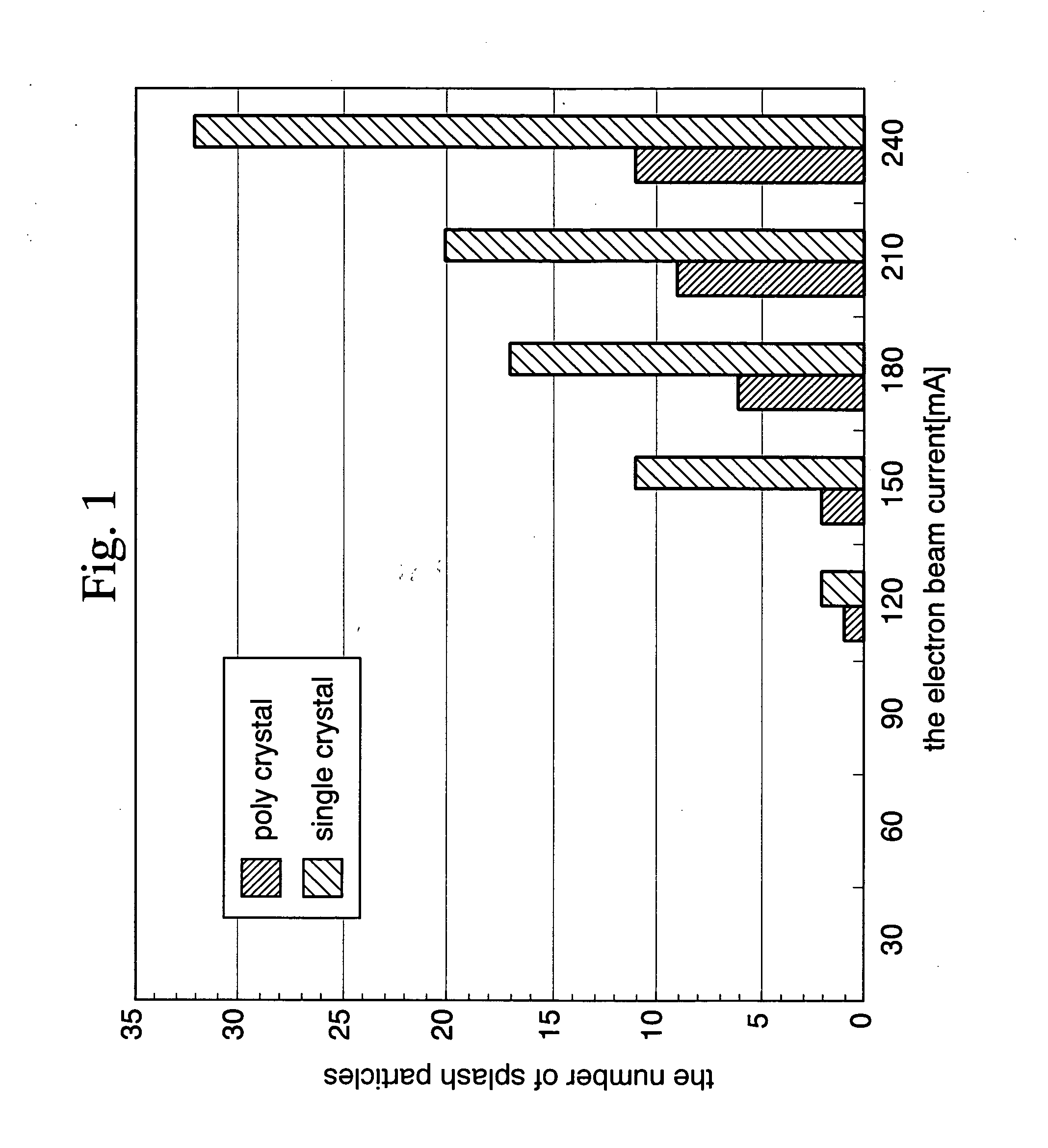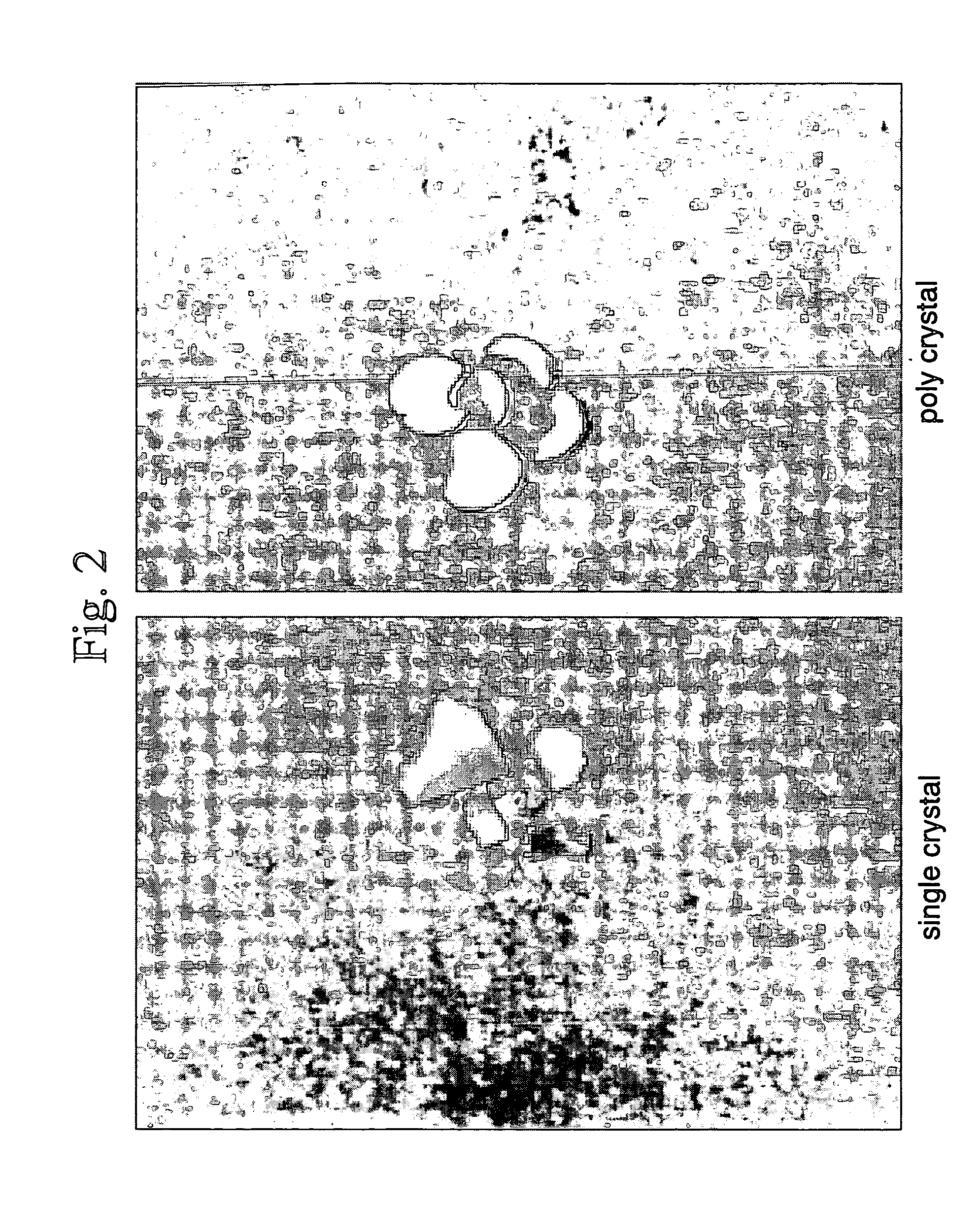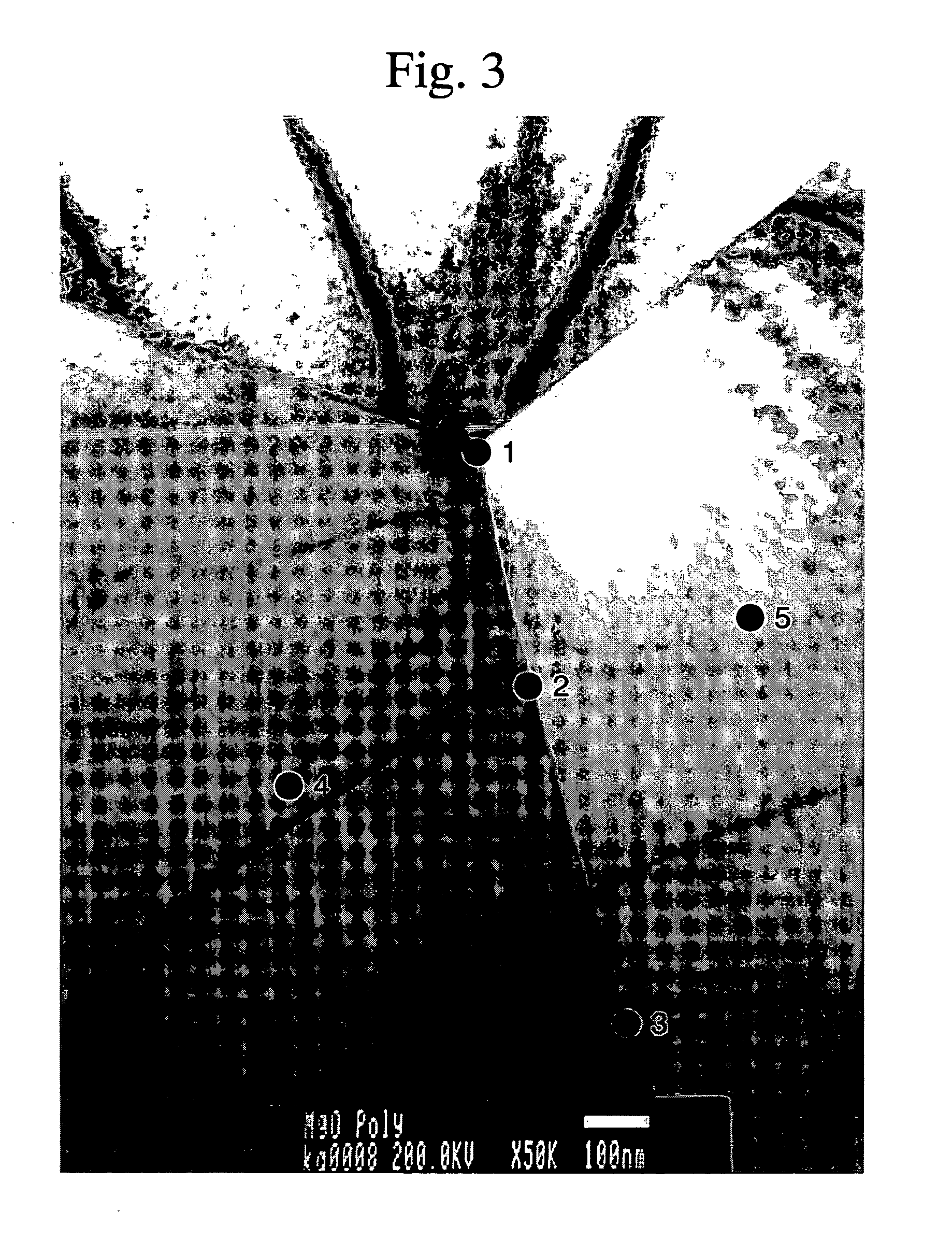Mgo vapor deposition material and method for preparation thereof
a technology vapor deposition layer, which is applied in the direction of vacuum evaporation coating, crystal growth process, polycrystalline material growth, etc., can solve the problem of reducing the efficiency with which the quantity of vapor deposition material can be used in the film formation process, affecting the film characteristics of mgo film, and poor efficiency of sulfur removal
- Summary
- Abstract
- Description
- Claims
- Application Information
AI Technical Summary
Benefits of technology
Problems solved by technology
Method used
Image
Examples
first embodiment
As follows is a detailed description of a MgO vapor deposition material according to the present invention and a production process therefor.
A MgO vapor deposition material of this embodiment comprises sintered pellets of polycrystalline MgO with an average sulfur S content of 0.01 to 50 ppm, an average chlorine Cl content of 0.01 to 50 ppm, an average nitrogen N content of 0.01 to 200 ppm and an average phosphorus P content of 0.01 to 30 ppm, as well as a MgO purity of at least 99.0%, and preferably at least 99.5%, and even more preferably at least 99.9%, and a relative density of at least 90%, and preferably at least 97%, and even more preferably at least 98%. Furthermore the average crystal grain diameter of the sintered pellets is from 1 to 500 μm, and the crystal grains of the sintered polycrystalline pellets contain rounded air pockets with an average internal diameter of no more than 10 μm.
If the sulfur S content is set to a value of less than 0.01 ppm, then the strength o...
second embodiment
As follows is a detailed description of a MgO vapor deposition material according to the present invention and a production process therefor.
In this embodiment, a degasified MgO powder similar to that of the first embodiment, with an average sulfur S content of 0.01 to 50 ppm, an average chlorine Cl content of 0.01 to 50 ppm, an average nitrogen N content of 0.01 to 200 ppm, an average phosphorus P content of 0.01 to 30 ppm, and a MgO purity of at least 99.0%, is subjected to electromelting and subsequent gradual cooling to form an ingot, and single crystal portions are then extracted from this ingot and crushed, thus preparing sheet-like single crystal pellets with a diameter of approximately 2 to 8 mm and a central diameter of approximately 5 mm. As a result, if these MgO single crystal pellets, which contain the gasification component quantities described above for this embodiment, are used to form a film on a plasma display panel, then in a similar manner to the first embodimen...
examples 1 to 4
To a sample of a desulfurized MgO powder (with an average grain diameter of 0.3 μm) that had undergone desulfurization treatment as shown in the above Table 1A was added 1% by weight of polyethylene glycol as a binder, and a slurry with a concentration of 30% by weight was then prepared using methanol denatured alcohol as the dispersant. Subsequently, the slurry was subjected to wet mixing for 24 hours in a ball mill (using nylon coated steel balls with a diameter of 5 to 20 mm), the dispersant was then gasified at 80° C. in a vacuum dryer, and dry crushing was then used to form a granulated powder with an average grain diameter of 200 μm. This granulated powder was then molded into a product of outer diameter 6.7 mmφ and thickness 2.0 mm, using a uniaxial press apparatus and a pressure of 1000 kg / cm2. The molded product was then placed in an electric furnace in a normal atmosphere, and then subjected to primary sintering for 1 hour at 1300° C., followed by secondary sintering for ...
PUM
| Property | Measurement | Unit |
|---|---|---|
| size | aaaaa | aaaaa |
| pressure | aaaaa | aaaaa |
| pressure | aaaaa | aaaaa |
Abstract
Description
Claims
Application Information
 Login to View More
Login to View More - R&D
- Intellectual Property
- Life Sciences
- Materials
- Tech Scout
- Unparalleled Data Quality
- Higher Quality Content
- 60% Fewer Hallucinations
Browse by: Latest US Patents, China's latest patents, Technical Efficacy Thesaurus, Application Domain, Technology Topic, Popular Technical Reports.
© 2025 PatSnap. All rights reserved.Legal|Privacy policy|Modern Slavery Act Transparency Statement|Sitemap|About US| Contact US: help@patsnap.com



